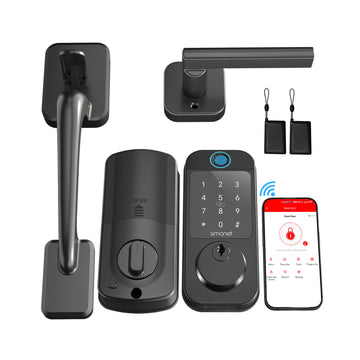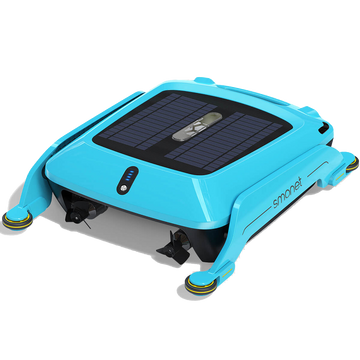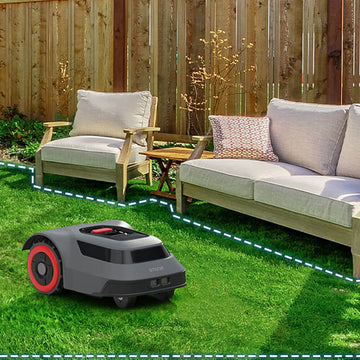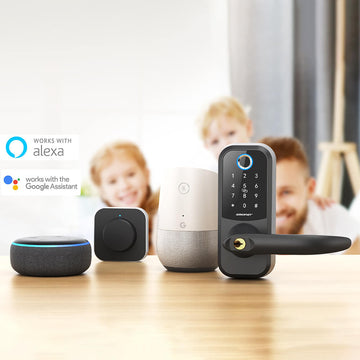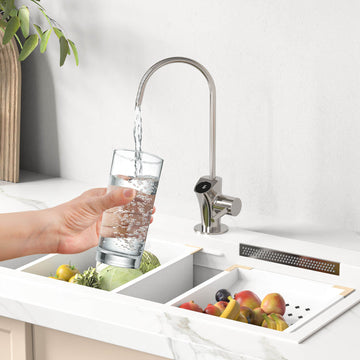Over the past few years, doorbell cameras have become increasingly popular. With contact-free deliveries, you are able to see and communicate with the person at your door from almost anywhere. Having a live video feed of your front door significantly boosts your home security, offering peace of mind by letting you know exactly who is calling before you’ve even opened the door.
1. What is a Doorbell Camera?
Doorbell cameras, sometimes called video doorbells, are a type of doorbell with a built-in camera that provides a video feed to a suitable monitor, such as a smartphone, when pressed.
A speaker on certain doorbell cameras allows you to communicate. It can also help you identify who is ringing your doorbell and what their intentions are before opening your door, which can provide an extra sense of security before letting them in.
2. How do Doorbell Cameras Work?
Doorbell cameras use either Wi-Fi or wireless data connectivity to relay a video feed from the camera to a paired monitoring device, usually a smartphone. When the doorbell is pressed, a notification will be sent to your phone, and once opened will allow you to view the video feed from the camera in real-time.
Some cameras will start recording as soon as they detect motion, but this might not be ideal for homes with pedestrian traffic nearby, such as apartment buildings, as it could result in numerous unwanted recordings.
You can typically start and stop recordings from your phone, and these recordings are usually saved onto a cloud storage service, though this often requires a subscription. If you prefer not to pay for a subscription, many doorbell cameras are compatible with SD cards, allowing you to save recordings and review them at a later time.

3. Why should I use a Doorbell Camera?
How often have you missed a delivery, only for the courier to take it back to a depot because they didn’t want to leave it outside your door? With a doorbell camera, you can communicate with your courier through the doorbell, instructing them on where best to safely leave your parcel.
A doorbell camera functions similarly to caller ID on a phone, giving you the chance to ignore or even dismiss unwanted callers.
Moreover, having a clear video feed of your front door enhances your home security. You’ll know exactly who is at your door before opening it, which can help deter potential intruders and provide an extra layer of security.

4. How to Install a Video Doorbell
Installation of a video doorbell https://smonetrobot.com/collections/smart-lock depends on whether it is wireless or not, but the process is similar for both. Here are the basic steps:
1) Choose Where to Mount Your Doorbell
If your new doorbell is wired, you will need to install it in the same place as your previous doorbell. Otherwise, mount it on either side of your doorframe where there is good visibility toward the entrance of your property.
2) Follow the Manufacturer's Instructions
Be sure to adhere to the manufacturer’s guidelines when fixing your mount, as instructions may vary depending on the material you’re screwing into. You might also use a wedge plate, which angles the doorbell downward slightly, providing a better view.
3) Install the Monitoring Application
There is usually a dedicated app that you need to use with most doorbells. Follow the in-app instructions to pair your doorbell with your smartphone.
4) Pair the Chime (If Available)
If your doorbell comes with a chime, follow the instructions to pair it, and then plug it into a central location in your home.
5. Video Doorbell vs. Security Camera, Which Should I Choose?
With video doorbells offering features similar to home security cameras, it’s natural to wonder which one suits your needs better. However, video doorbells and home security cameras have unique features that make them suited for different purposes.
Video Doorbells: These offer practical benefits like real-time communication with visitors and convenient package receiving. They are particularly useful for enhancing security at the front door, providing video and two-way audio interactions.
Security Cameras: On the other hand, security cameras provide broader surveillance coverage, usually with features like pan, tilt, and zoom, and they are more effective at deterring intruders. With superior viewing angles and often higher resolutions, they are designed for monitoring larger areas.
For comprehensive home security, it’s advisable to use both. Video doorbells can function as a great first line of defense, while security cameras can cover other entry points and broader property areas. Integration with a home security suite ensures that all areas are protected effectively.

6. Advantages of Hornbill T1 Video Smart Lock
When it comes to advanced door security, the Hornbill T1 Video Smart Lock stands out. This innovative device combines several essential security features into one integrated system:
-
Versatility and Convenience
The Hornbill T1 Video Smart Lock integrates a camera, doorbell, fingerprint scanner, keypad, Bluetooth, and built-in Wi-Fi for app remote control. This level of integration ensures that all aspects of your door security are covered. -
High-Resolution Video and Audio
The 2K HD camera and 155° wide-angle lens offer clear visibility, even up to 5 meters at night. The built-in two-way audio feature allows for clear communication with visitors, making it easy to manage deliveries and other interactions. -
Enhanced Detection
With PIR motion detection, the T1 detects human movement near your front door, sending real-time notifications to your app. This helps you monitor suspicious activity and act promptly. -
Durability
With an IP65 weatherproof rating, the T1 Video Smart Lock is built to withstand harsh weather conditions. It operates reliably in temperatures ranging from -25 to 70 °C, ensuring consistent performance year-round. -
Long Battery Life
Equipped with two rechargeable 2500 mAh batteries, the T1 provides 120 days of use on a single full charge, assuming an average of 10 operations per day. -
Remote Control and Integration
The built-in Wi-Fi (2.4G only) allows the admin to remotely unlock or lock the door via the app, generate and share one-time or custom codes with visitors, and even check the live camera feed.
The Hornbill T1 Smart Lock is a robust and versatile solution for those looking to upgrade their front door security with advanced features and seamless integration.
7. Doorbell Cameras FAQs
1) Do Doorbell Cameras Record all the Time?
While some doorbell cameras may have the option for continuous recording, this can be space-intensive. Most video doorbells start recording when motion is detected, which is usually sufficient for home security purposes.
2) How do Doorbell Cameras Get Power?
Doorbell cameras can be powered via traditional doorbell wiring or with a rechargeable battery pack. The latter option offers more flexibility in installation locations.
3) How Far can a Video Doorbell See?
The effective range of a video doorbell varies depending on the quality of the camera. Generally, they can detect motion up to 50 feet away, which is adequate for most residential applications.
8. Conclusion
With numerous doorbells on the market, it can be challenging to determine the right one for your needs. By understanding the key features that are important to you, such as video quality, two-way communication, and motion detection, you can choose a video doorbell that meets your specific requirements.
The Hornbill T1 Video Smart Lock offers an excellent starting point for those looking to enhance their home security. With its integrated 2K HD camera, doorbell, and advanced security features, it provides comprehensive protection and convenience. Whether at home or away, a video doorbell like the T1 ensures you never miss a delivery and keeps your property secure, giving you peace of mind.

